Paintings From The Earth – The Ochres From The Kimberley
We have filled Gallery One with a stunning exhibition titled Made in Ochre, featuring paintings from Kimberley artists. There are paintings by major artists of this tradition including many senior artists who’ve now passed on.
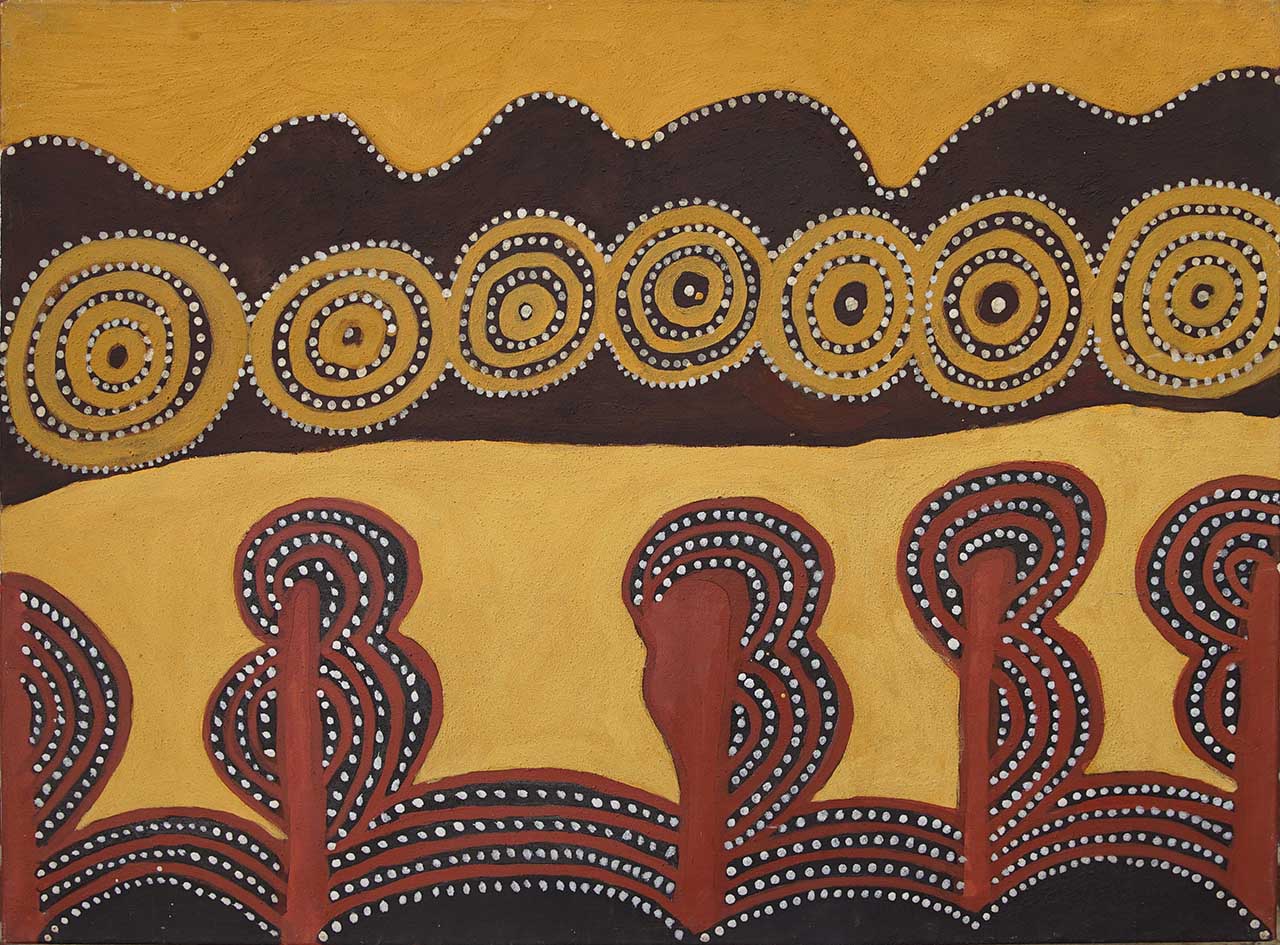
The exhibition gives an overview of the style used by ochre artists, with a particular emphasis on the East Kimberley. They’re many of the symbolic landscape paintings from Warmun and the area right through to Kununurra.
We’ve got some of the really big names from the region. There’s wonderful small works by Rover Thomas and Queenie McKenzie. Also represented are works by Freddie Timms and Jock Mosquito, both senior artists who have recently passed away. Along with Jack Britten, Hector Jandanay and Henry Wambini, these are all very significant ochre painters from a generation now past.
Whenever we put the ochre paintings up on the gallery walls, it always fills the room with that warm feeling of the earth. The artists are masters, using the rich colours from the iron oxide pigments that define ochre painting.
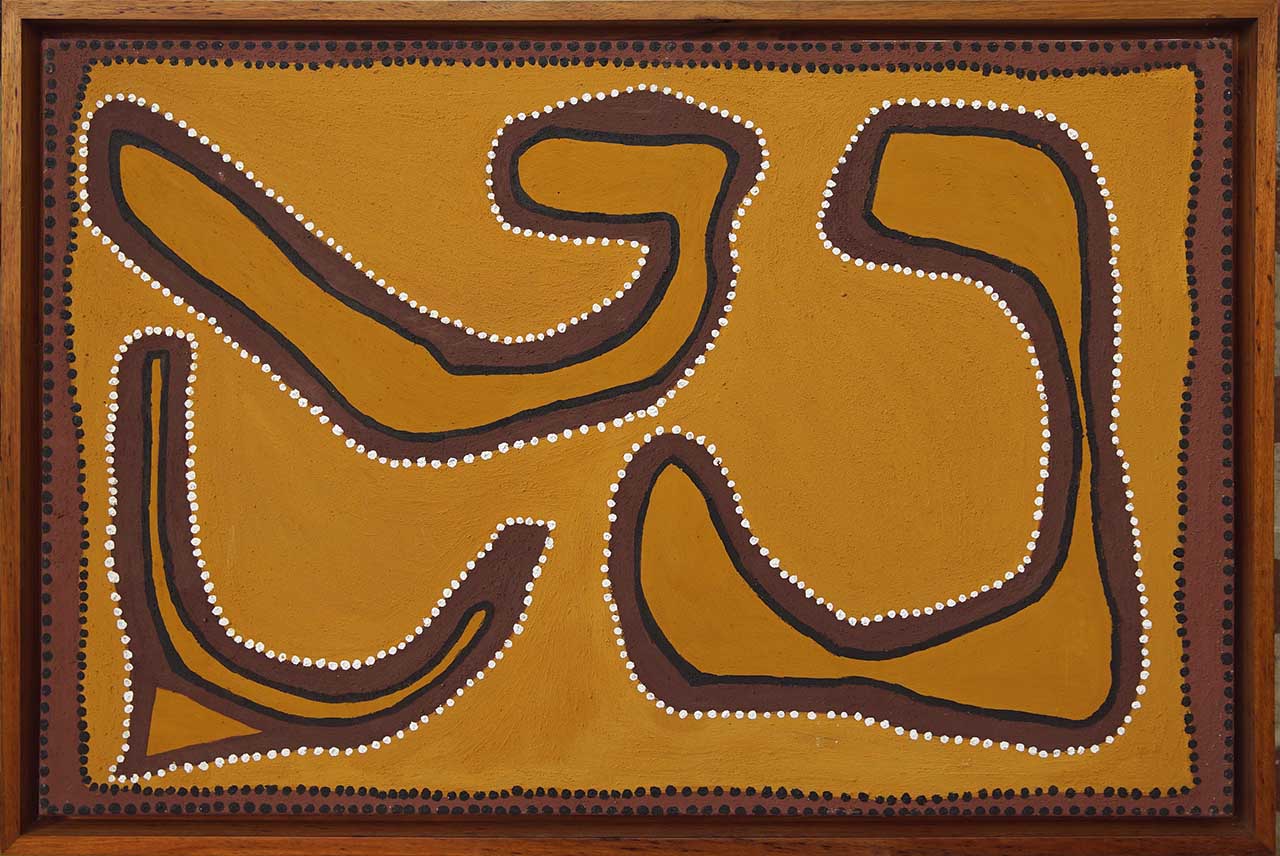
We’ve got some significant paintings of the Bungle Bungles, which is right in the heart of that East Kimberley country.
Many examples are by Jack Britten, and there are some really beautiful works by Shirley Purdie, who combines the forms of the landscape in a way that makes something that’s recognisably a landscape, but also quite abstract. The solid blocks of colour link together to create those sensational shapes that are the landforms so familiar in the East Kimberley region.
The exhibition has some exquisite medium sized works, which don’t always feature in exhibitions. They are beautiful works in the range two to three thousand dollars, which makes them a piece of Kimberley history that is affordable and quite exceptional.
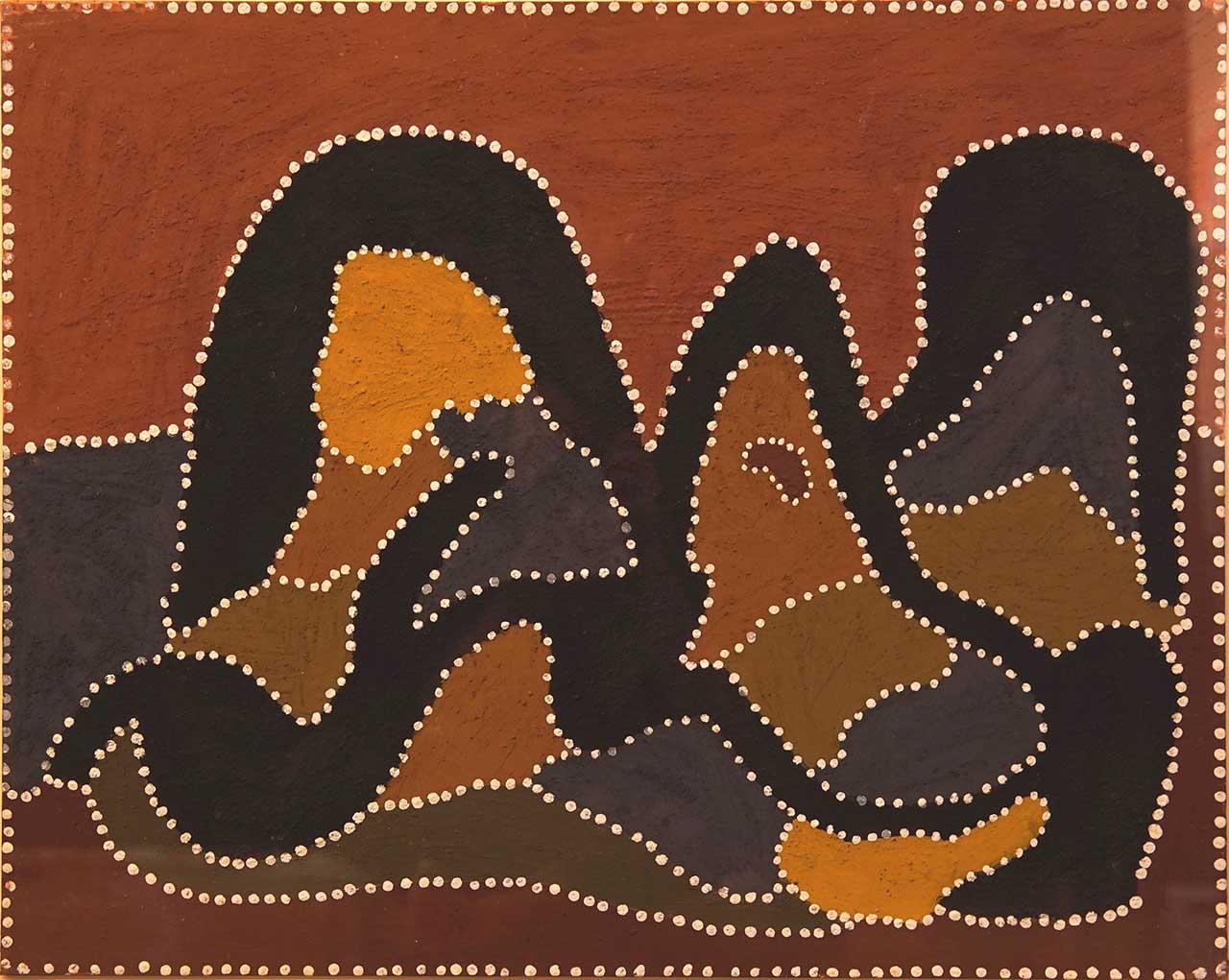
The significant thing about the works is that they are very minimal paintings. This is best exemplified by the work of Freddie Timms. Freddie was a stockman and much of his painting style is his account of the Country. The paintings show the map that he carries around in his head. It shows the different soil types, some that are impassable after rain, and the locations around the ranges and the various waterholes where they would drive the cattle.
There’s black soil country, red soil country and sandy country that’s in yellows and whites. There’s trails or exit ways across that country which are often marked with a double row of dots.
Freddie is the most minimal of the painters represented and these big blocks of pure earth colour make up the maps of his country.
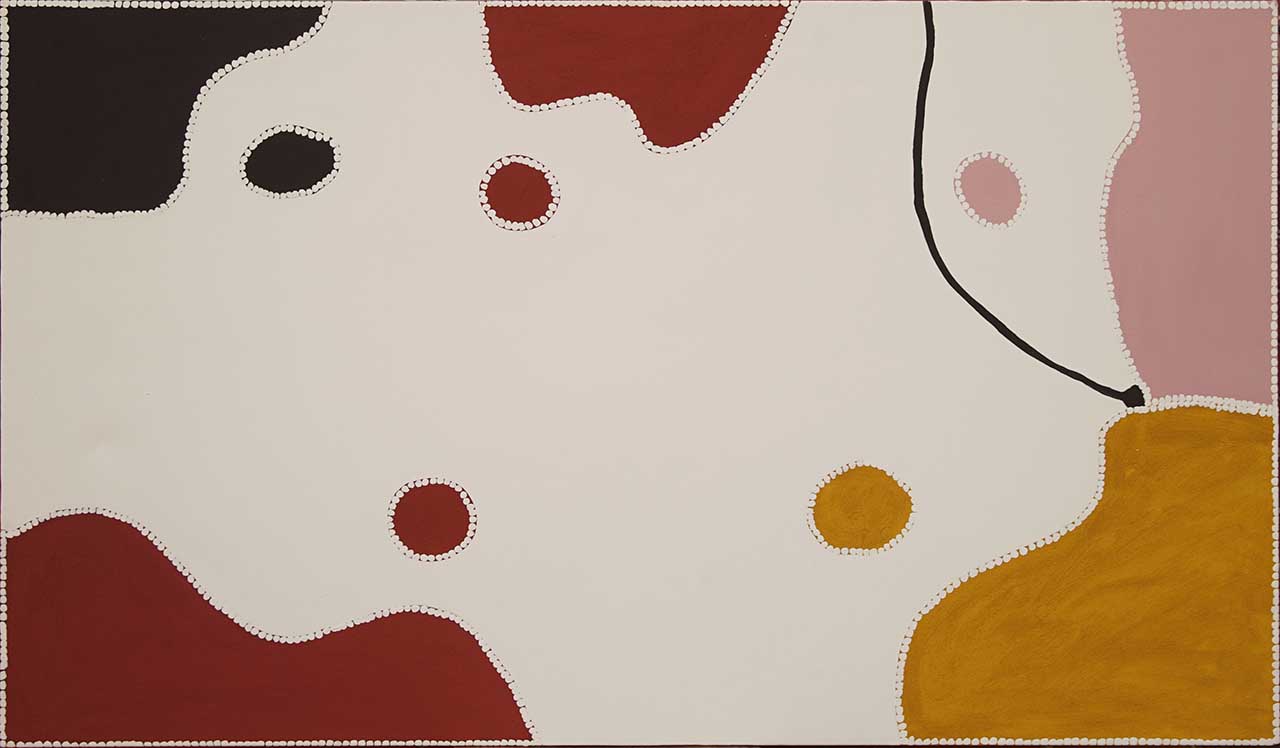
The other significant Kimberley style that employs ochre art is found in the Wandjina paintings from the coastal region of the West Kimberley.
These works show Wandjina the Rainmaker, the ancient spirit Ancestor associated with rebirth and often combined with other totems and sometimes with Gwion Gwion (Bradshaw) figures.
Some great examples of Wandjina art are from Lily Karadada at Kalumburu. Other works are by Jack Dale Mengenen, representing Wandjina spirit figures as a feature of the landscape, where they are prevalent in the rock paintings in sacred sites all through the West Kimberley.
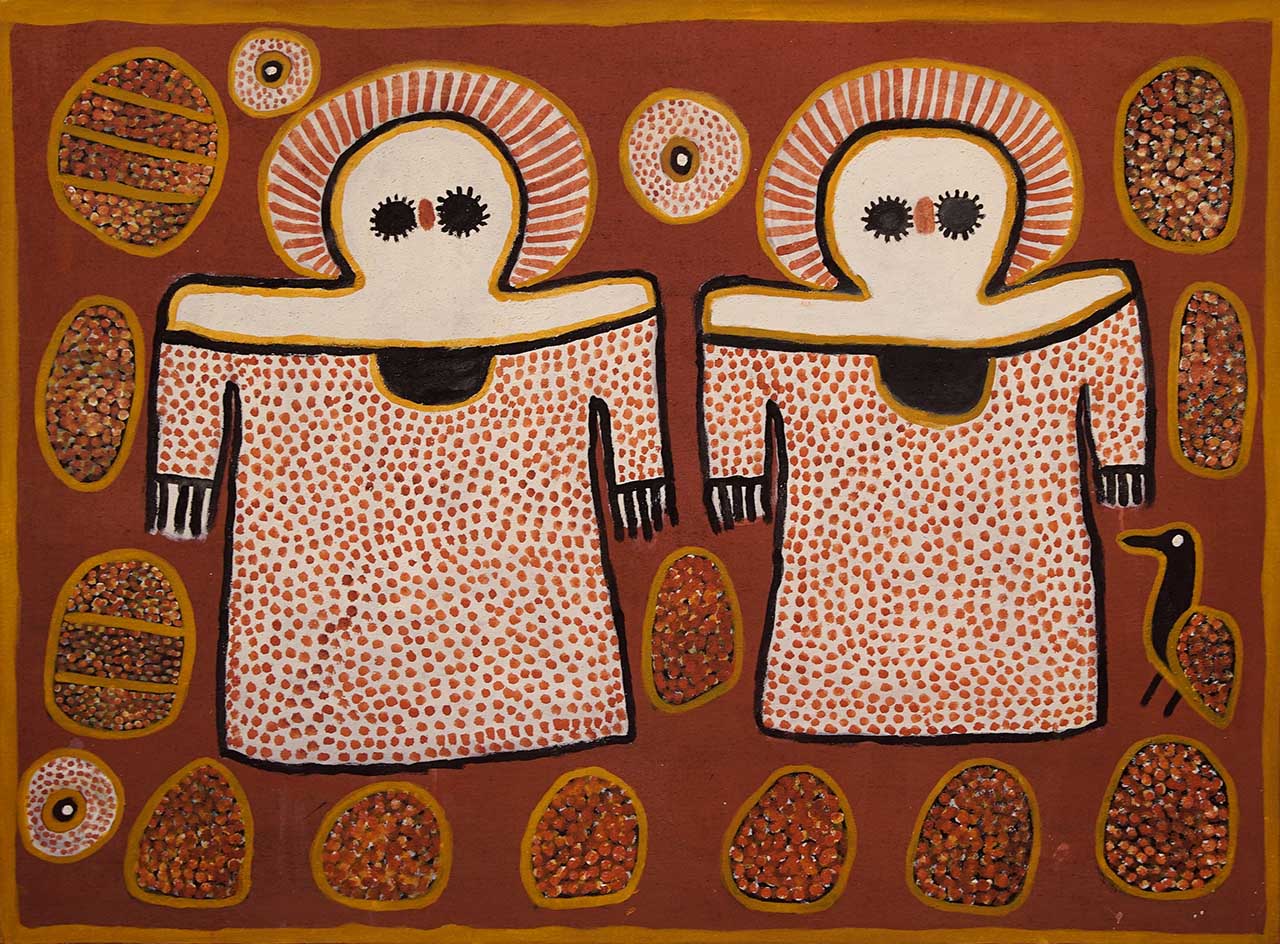
There are examples of ochre painting on rock galleries that go back at least 18,000 years. Recent research using new technologies may well take that date back another five or ten thousand years. This gives us some idea of how long these figurative images have been painted on rock faces in the West Kimberley.
We love these ochre paintings and we hope you get a chance to come in and see some of them for yourself.
Read more: Australian Aboriginal Ochre Painting
View more:
